A Magnificent Obsession
Collecting and nurturing remarkable trees has been a 30-year passion for Caledon’s Gary Haslett.
On a windswept hill just south of Orangeville stands an 1850s-era house, embraced by trees from Europe, Asia and the Appalachians. The trees sink roots into a shallow layer of organic soil, and below that, into stony glacial till.
This is the arboretum of Gary and Mary Haslett, retired Peel educators. Over the course of about 30 years, the Hasletts have brought an eclectic assemblage of woody plants to their 3.5-acre Caledon property. Their odyssey has been a labour of love that has yielded impressive – if improbable – results.

The Hasletts have planted Japanese maples from Asia, silverbell trees from Appalachia, and sassafras and tupelo from the Carolinian zone of southwestern Ontario. There are pine and spruce trees from western North America, and rhododendrons from Asia and Europe.
But Gary is especially captivated by his European beech trees. Gary’s love for these trees predates the arboretum. A transplant from Oregon, where conifers dominate, Gary was wowed by the deciduous trees that flourish in southern Ontario. Shortly after he arrived here in his early 20s, he had a flashbulb moment with a European beech tree in Etobicoke. This magnificent specimen became the spark that ignited his decades-long obsession with beech trees.
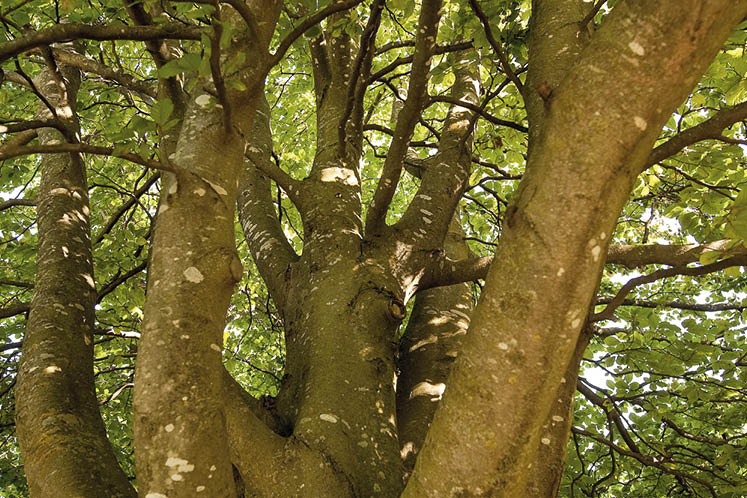
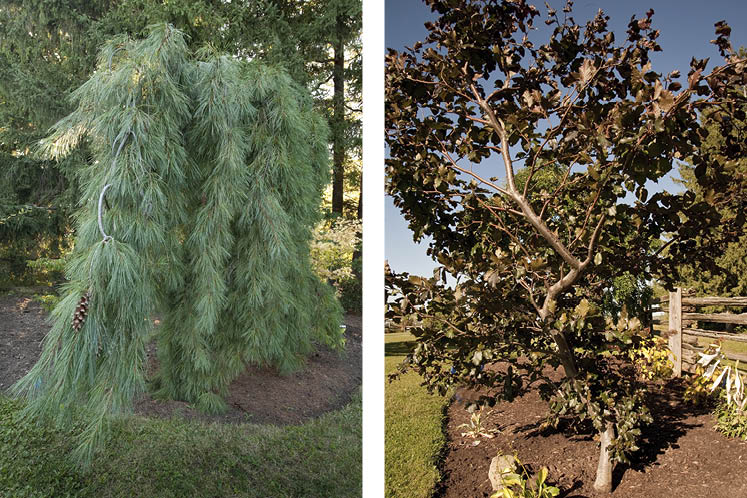
After Gary and Mary married, they bought a house in Mississauga with a yard bereft of trees. Opportunity! A drive through Niagara was propitious. Gary spotted a pair of tri-coloured European beech trees growing in a front yard. He was besotted. Mary watched as he approached the residence, knocked on the door, and asked the homeowners whether they would sell the trees. To Gary’s delight, the homeowners assented to his audacious request, and soon afterward a truck with a tree spade delivered one of those trees to the Hasletts’ Mississauga yard. The other beech was given to the truck operator for his trouble.
Gary now grows 51 named varieties and cultivars of European beech, a total that could make the Haslett arboretum the single greatest repository of these trees in North America. The University of Guelph has approached him, floating the idea of taking scions – branches used for propagation – to boost its beech tree inventory.
Beguiling beeches
For reasons unknown, European beech trees – as opposed to our native American beech – are prone to producing prolific genetic mutations known as “sports.” A sport may be a branch that diverges from the norm or an entire tree that exhibits distinctive qualities. These sports, if deemed worthy, are given cultivar names and made commercially available. They include trees with purple or copper-coloured leaves, trees with golden leaves in the spring, trees with variegated foliage, columnar (narrow) trees, trees with weeping or pendulous forms, dwarf trees, spreading trees, trees shaped like umbrellas and trees with a combination of these traits.
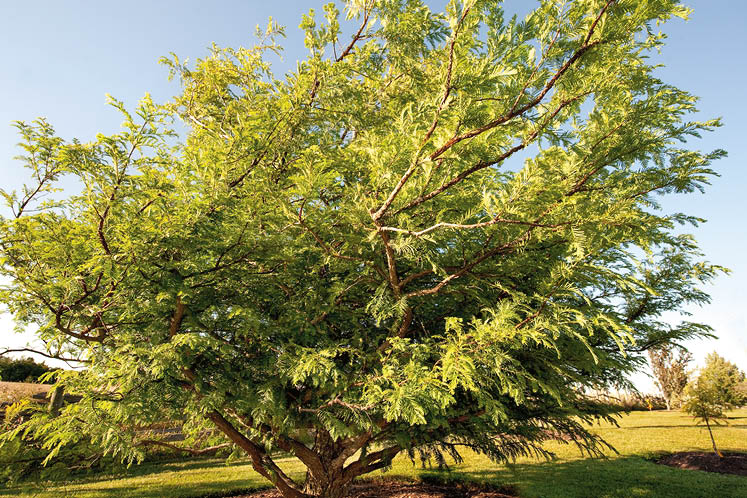
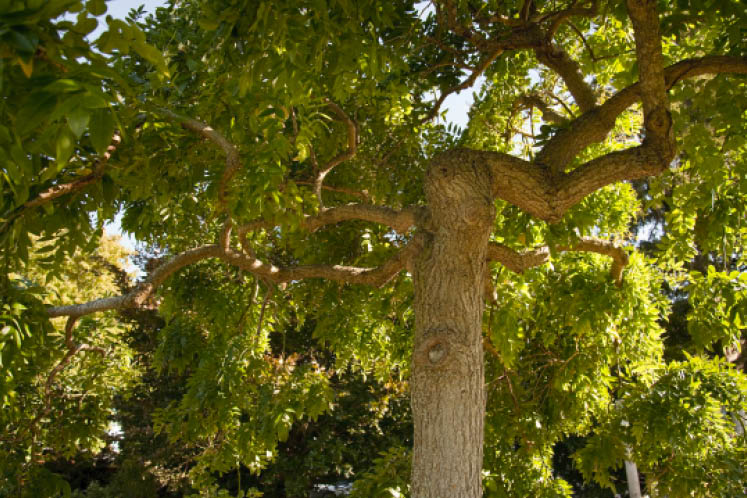
Most of these cultivars have simply appeared naturally through the centuries. Very few grow true from seed, meaning their unique qualities can be passed down only through vegetative propagation: cuttings and grafts that yield clones of the parent. They are utterly dependent on us for survival. The beech nuts they produce simply grow into the original species. Why European beech trees produce so many aberrant forms that, without human help, have no future is a puzzle. I wonder what Charles Darwin’s take would be.
Regardless, courtesy of the nursery trade and gardeners like Gary who nurture them, these fascinating and beautiful genetic aberrations live on. Many named cultivars have thrived in this manner for decades or even centuries.
Works of art
These unique beech trees are organic works of art, possessed of singular beauty. They are sought after by plant enthusiasts to fill their gardens, just as collectors decorate their walls with select pieces of fine art. Of course, those who collect living works of art enjoy the added pleasure of watching them grow more beautiful over time. Gary is one of these natural art lovers, and like people who seek rare paintings from around the world, he has, through a horticulturist friend, acquired cultivars from places as disparate as Kew Gardens in London, Scotland’s Dawyck Botanic Garden, and Verzy in France, where hundreds of dwarf beech trees grow.
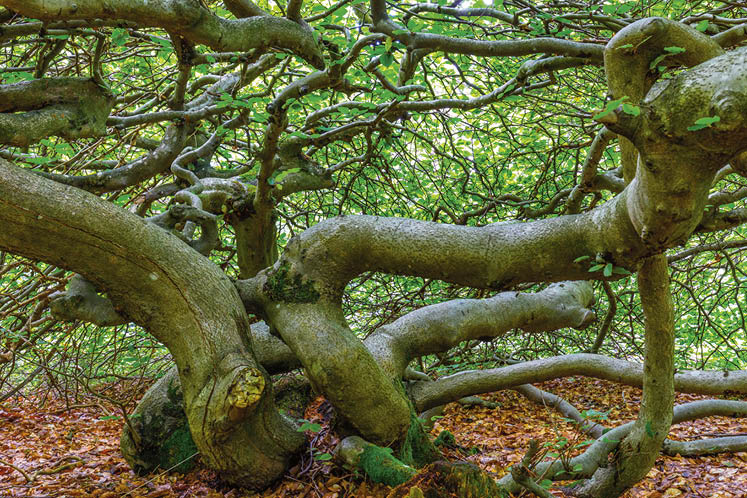
Gary’s dwarf Verzy beech is steeped in ancient arboreal history. It comes from a fascinating lineage that reaches back at least half a millennium. Verzy’s dwarf beech trees are cultural icons. Sublimely lovely, their origins are obscure. One story suggests they were planted five centuries ago by monks who found them on their travels through Europe. More prosaically, they may have simply originated on site. Regardless, these dwarf beeches are a major tourist draw in the part of northeastern France where they grow. And strikingly, a small percentage of their seeds germinate into trees that exhibit the dwarf characteristics of their parents, unlike most beech cultivars.
An intriguing tale, perhaps apocryphal, represents the many myths and legends that surround these mysterious dwarf beech trees of Verzy. In Joan of Arc’s childhood, a particularly beautiful dwarf beech tree grew in her village of Domrémy-la-Pucelle. This tree, known by various names, including l’arbre des dames and l’arbre des fées (“the tree of ladies” or “the tree of fairies”) was venerated by the townspeople and became a pilgrimage destination. On Joan’s travels, she reputedly stopped at Verzy and climbed into one of the dwarf beech trees, perhaps because it reminded her of the sacred tree of her youth.
The mystique of Verzy’s dwarf European beeches stirs the imagination, as do other forms of European beech. Gary loves big specimens because their large, muscular branches and often contorted shapes summon the delicious spookiness of “The Legend of Sleepy Hollow,” with the Headless Horseman thundering after Ichabod Crane against a backdrop of eerie trees. For Gary, beech trees also evoke the Ents, the animated walking trees of the Lord of the Rings trilogy. Gary fantasizes that these trees, distinctive and powerful, with smooth skin-like bark seemingly draped over arboreal muscle, might get up and walk.
Branching out
But Gary’s cherished beeches aren’t the only trees in his arboretum. He has pretty much tapped out the available cultivars and varieties of beech trees, allowing him to turn to conifers that are also available in numerous named cultivars. Among the firs, spruce and pines he’s planted are weeping forms, rounded forms and spreading forms, as well as others with variegated or golden foliage. One pine cultivar, squat and bristling with long needles, reminds Gary of a hedgehog. Oak trees also tempt his arboreal passions. He has turkey oak, which is a red oak cultivar from Asia with variegated leaves, and various English oak cultivars.
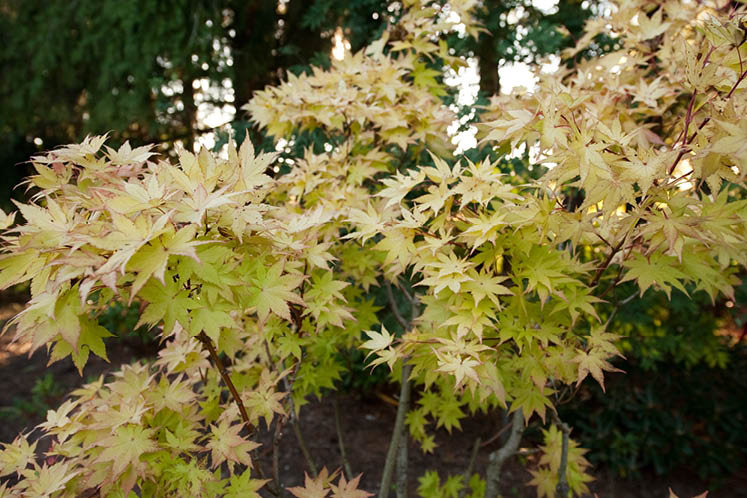
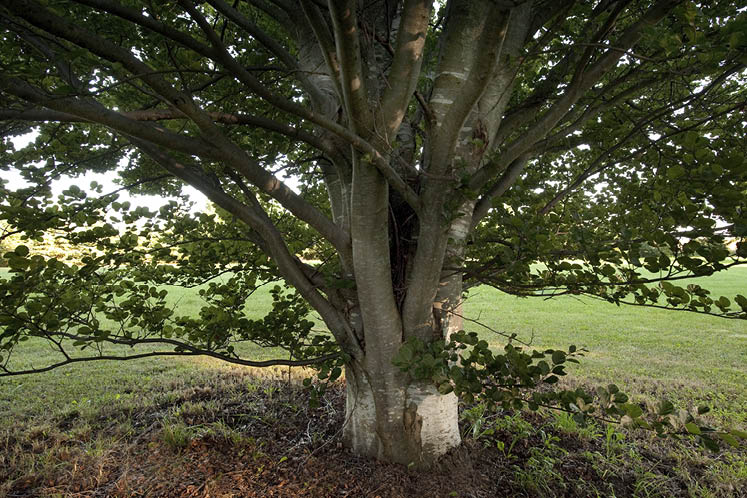
Many of these trees are not supposed to grow, let alone thrive, in the Haslett’s zone 4 (zone 5 with climate warming?) garden. Gary and Mary are frequently asked to explain their success.
They give some of the credit to what the glaciers left behind – the “potato gravel,” as Mary calls it, that lies below the surface. This gravel, full of potato-sized stones, means drainage is not an issue. Most woody plants don’t appreciate wet feet. The organic layer atop the gravel, presumably accumulated millimetre by millimetre over the thousands of years that forests cloaked the land, provides some crucial nutrients.
But the success of the arboretum trees goes far beyond the existing subsurface character. It has much to do with placement, soil preparation and continuing care. The need for thoughtful placement is illustrated by Mary’s pride and joy – the rhododendrons. Some of these showy plants, with their broadleaved evergreen foliage, are now pushing 2.4 metres (8 feet) in height. They are wisely situated under a double row of mature Norway spruce, bathed by early morning sunlight but protected by the spruce boughs from the harsh midday sun.
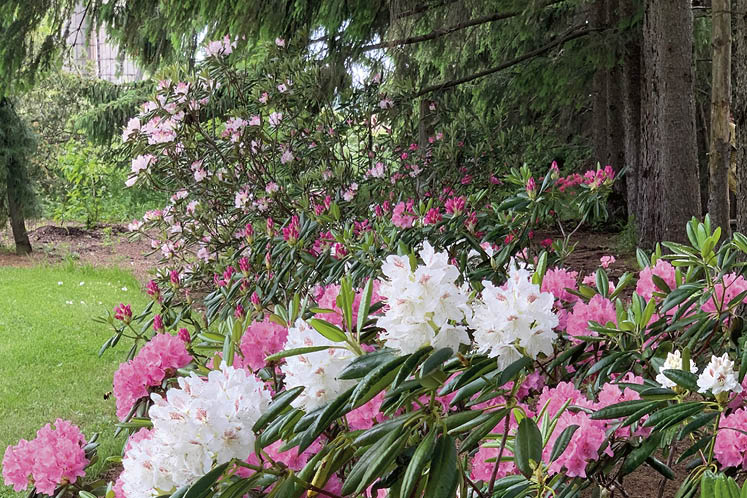
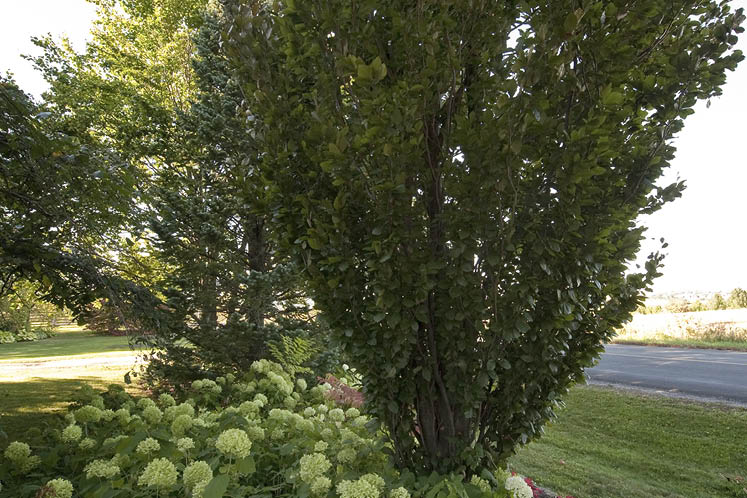
The spruce trees also tame the drying winds of winter, and their needles, dropped on the ground, augment the soil acidity the rhodos require. I admit to a little gardening envy. I know from unhappy experience that planting a rhododendron in my clay soil – even though I’m one climatic zone south of Gary and Mary – is an expensive effort in futility. I plant one, walk away and check it the next day to find a desiccated skeleton in its place. (I admit to a little hyperbole, but not much.)
Constant care
If placement is important, so is soil amendment. Gary takes this task very seriously. “I do a lot of work preparing the soil. Key ingredients are composted pine bark to keep the soil loose, and chunky peat for the acid lovers. Beyond this, I add other organics like composted leaves to nourish the new plants.”
Decades of gardening have also taught Gary that his newly established plants need to be doted on for about three years before they adapt to their new sites. This might involve the addition of more organic material, watering during dry spells and protection from wild winter winds. He has also learned the hard lesson that small woody plants also need to be protected from gnawing teeth. A single bite from a rabbit’s impressive incisors is enough to destroy a small precious tree. Voles tunnel under snow to girdle the tender bark of young shrubs and trees. So, to avoid springtime regret, Gary shields his new, small plantings from hungry mammals over the winter.
Thirty years on, the Haslett arboretum admirably complements their 19th-century house. Though built in the Victorian era, the architectural style is Georgian, and the couple has painstakingly maintained that character.
The hilltop setting of the house aligns with Georgian sensibilities. Like the Haslett home, Georgian houses in Britain were often placed on hills, overlooking the surrounding countryside. British landowners of means desired a pastoral setting, with deer browsing and perhaps a stream wending through the lowlands. Integral to this vision were big trees – carefully placed oaks, cedars of Lebanon and, unsurprisingly, European beech trees. Also treasured were the horticultural exotica arriving at the time from distant lands, courtesy of British plant explorers. Emulating Georgian plant enthusiasts, Gary also seeks the rare and the unique from throughout the temperate world. He’s guided by a Georgian muse.
The uniqueness of the Georgian-inspired landscape they’ve created has prompted Gary and Mary to approach the Town of Caledon with a proposal to consider including the arboretum in the heritage designation already granted to their home. A town official – a gardener who was sympathetic to their proposal – has visited but no decision has yet been rendered.
Embracing diversity
The diversity of the Haslett arboretum makes me smile. Like Gary, I love the exquisite creativity of nature. Birds, butterflies and plants fascinate me, and the more diversity, the better. I’ve long despaired at how stultifying our residential properties often are. Many of us, privileged with yards, are satisfied with foundation plantings of predictable yews or junipers and perhaps a sole specimen tree planted out front. We miss opportunities to enhance our landscapes with diversity, with beauty and with wonder.
The Hasletts know the value of embracing diversity. One of Gary’s favourite quotes comes from the character of Azeem, played by Morgan Freeman in the movie Robin Hood: Prince of Thieves. A little girl approaches Azeem, fascinated by his dark complexion. She asks, “Did God paint you?” Azeem responds, “For certain.” The girl asks why, and Azeem replies, “Because … Allah loves wondrous variety.”
Mary is boosting that diversity by nudging Gary toward planting more perennials. She knows the arboretum will be enhanced by creating an understorey of herbaceous and flowering plants. “Mary understands the fundamentals of photography – of balance and proportion,” says Gary. To this end, Mary is integral to arboretum planning. She may not share Gary’s beech tree obsession, but she loves plants and has an eye for their placement.
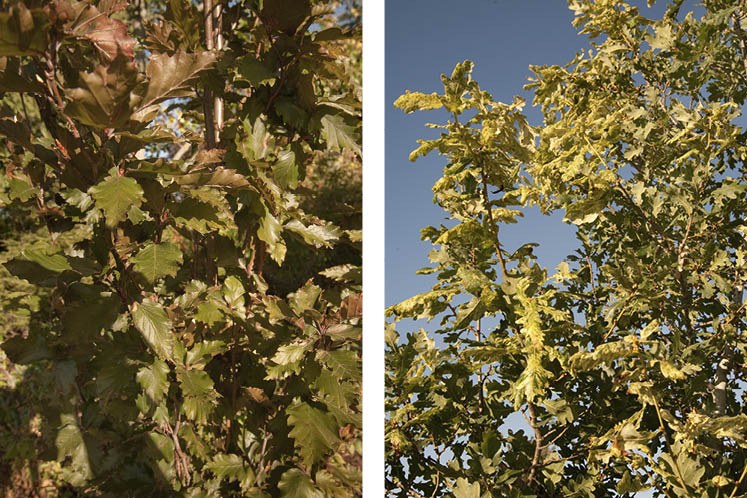
Mary also celebrates the physical and psychological benefits of participating in the arboretum project. “Gardening is great for retirees,” she says. “It offers plenty of fresh air and gentle physical activity, and it keeps you mentally active too – learning about the plants and their particular needs.”
Gary is profoundly committed to the arboretum and the trees he’s planted. He becomes emotional as he explains the philosophy governing his relationship with living things. “My dogs, my horses and my plants connect me to the living world and to other human beings who share my passions. You nurture the things you love. They respond to that care by flourishing and giving back to you – symbiotic relationships. Putting my hands in the soil, preparing the planting sites and taking care of my trees is deeply satisfying. In turn, they give back to me with their beauty, their habits, their growth. They bring me happiness and fulfillment.”
You don’t have to be a gardener to understand that care and nurturing – love, if you will – build strong relationships. Gary’s philosophy provides guidance, not only for tree lovers, but also for anyone seeking to build enduring, satisfying relationships with the world at large.
More Info
Read more of Don Scallen’s observations on local flora and fauna in “Notes from the Wild”. He will present a talk called “A Celebration of Trees” at the Mono Pollinator Garden Festival on June 15. See townofmono.com in May for details.
Related Stories

Georgian on their Minds
Sep 18, 2018 | | At Home in the HillsA passion for restoration has filled this Melville couple’s hearts and spare time for more than two decades.
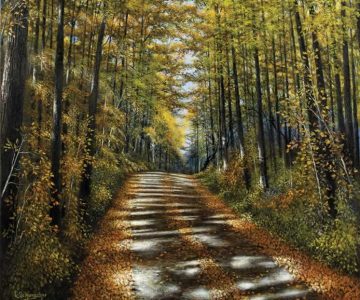
Meetings with Remarkable Trees
Sep 9, 2011 | | EnvironmentWe revel in their beauty, relax in their shade and are calmed by the soothing sound of their leaves soughing in the wind.
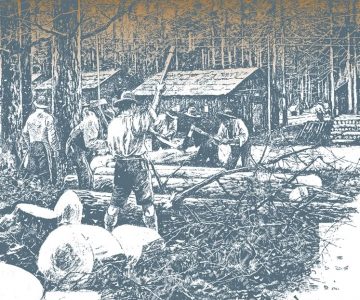
The Trees Had to Go!
Sep 18, 2020 | | Historic HillsSettlers in the 19th century came here to farm, and to do that they had to clear the trees. Their success with that was thorough and dramatic. So was the impact on the landscape.
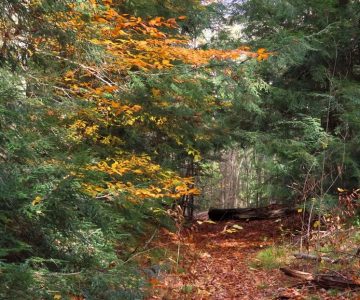
Tree Co-operation
Nov 12, 2019 | | Notes from the WildThe research into the co-operative nature of trees is in its infancy.








